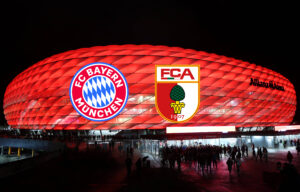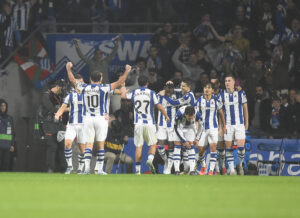Pochettino Should Abandon Tottenham Back Three
After a string of poor results, coupled with an injury to Ben Davies, Tottenham manager Mauricio Pochettino decided to deploy a back three against Arsenal on Sunday.
On the one hand, this was successful because it allowed for wingbacks to provide more width. Fielding Eric Dier, Jan Vertonghen and Kevin Wimmer garnered some patchwork success for Spurs.
However, playing three centre-backs demands the use of wingbacks, where Spurs do not have much depth. In addition, such wholesale change to a successful formation undermined the progress Pochettino has made in shoring up his defence. If Tottenham retains this formation it will take too long to adapt to it.
Tactical Flexibility
So far, Pochettino has shown some flexibility in terms of his midfield. Starting with a 4-2-3-1, he has since tested a 4-4-2 and recently deployed the squad in a 4-1-4-1 formation. It is vital to change formations and tactics during runs of poor form or injury. A new tactical approach was needed then, due to Spurs’ recent results.
Playing three at the back, in a 3-5-2 formation, created a more offensive side overall. By using wingbacks, the likes of Kyle Walker and Danny Rose stayed higher up the pitch, helping to pin the opposition’s fullbacks. Crucially, the formation allowed Heung-Min Son and Harry Kane to be fielded together. These two strikers occupied the Arsenal centre-backs to allow Spurs midfielders more space.
While Kane is returning from injury, this could be the perfect solution to ease him back into the game, whilst Son could benefit from a striker to play off. It could also be an alternative to turn to later on in a match. For example, the tactic could be effective when two neutralising formations cause a stalemate in play. Therefore, changing to this more attacking formation could allow Spurs to break through in tight matches.
Defensive Strength
Playing three centre-backs is risky, even in this modern age of football. Although there are also many success stories, including the Italian national team and Juventus. Giorgio Chiellini, Andrea Barzagli and Leonardo Bonucci are each exceptional defenders. In this formation, they have reached UEFA Champions League finals and a Euro 2016 quarterfinal.
In a similar fashion, a first team selection of Toby Alderweireld, Vertonghen and Dier could prove to be a successful defence. All three are excellent on the ball, strong in the air and all have decent pace. In the first half, the back three caught Arsenal offside seven times, showcasing their successful high line. However, Alex Iwobi and Theo Walcott managed to break through and both came close to scoring at various points in the match.
Protecting this backline is Victor Wanyama, who screens across the back three. Furthermore, wingbacks bolster the overall defence. Kieran Trippier and Ben Davies are less suited to the role as Walker and Rose, which reveals the lack of depth.
During an injury or suspension crisis, this would mean Spurs would revert to four at the back. Depending on how high these wingbacks play, it could be closer to a 5-3-2 formation. But with Spurs’ successful defensive record for the past two seasons, having another defender is a little unnecessary. This gives Walker and Rose the freedom to get up the pitch to provide crosses and to arrive at the back post to contribute to the goal tally.
Four or Three At The Back?
In summary, having three at the back would provide good flexibility. The tactic adds more defenders and could allow Walker and Rose to stay higher up the pitch. However, Spurs already have a sound defensive record with Vertonghen and Alderweireld. Pochettino should retain his four at the back to avoid meddling with a successful defensive system.
Main Photo:






